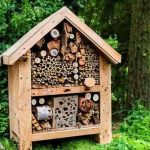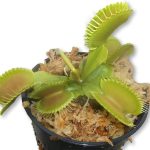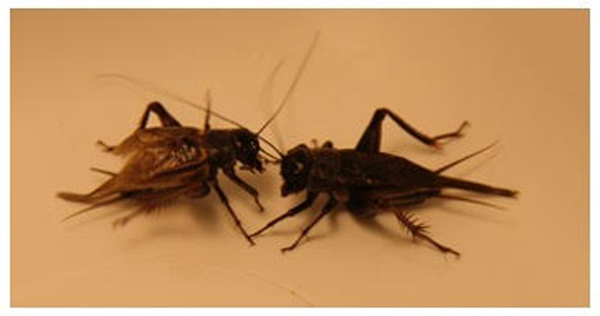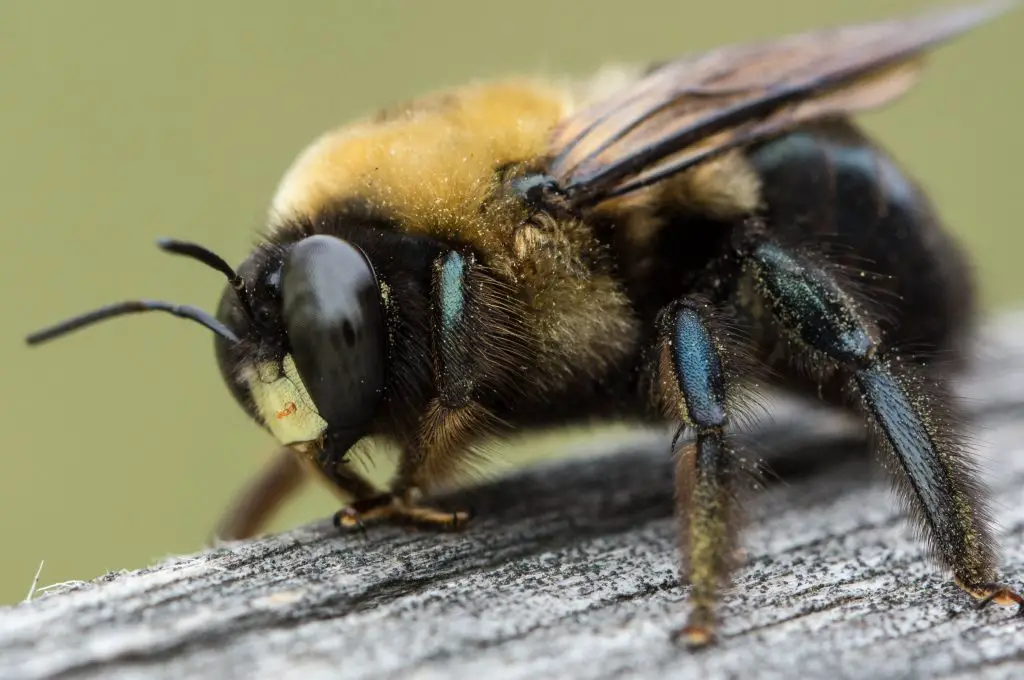Do butterflies live in bug hotels? Butterflies typically live in trees, bushes, and other plants. However, they will also inhabit man-made structures like bug hotels. Bug hotels provide a place for butterflies to rest and lay their eggs.
The eggs hatch into caterpillars which then turn into butterflies.
Do Butterflies Use Bug Hotels? Exploring Insect-friendly Accommodations!
Have you ever wondered if butterflies take advantage of bug hotels? These charming insect-friendly accommodations have become increasingly popular in gardens and outdoor spaces, providing a safe haven for beneficial insects like bees and ladybugs. But what about butterflies? We’ll explore whether butterflies use bug hotels and how these unique structures can attract a variety of fascinating insects to your yard. So, grab your butterfly net and join us as we delve into the world of insect-friendly accommodations!
Understanding Bug Hotels
- Purpose: Bug hotels are structures designed to provide shelter for various insects and small creatures. They typically consist of different compartments filled with natural materials like wood, straw, and bamboo.
- Inhabitants: These accommodations are mainly used by insects like solitary bees, ladybugs, earwigs, and some species of beetles.
Butterflies and Bug Hotels
- Habitat Needs: Butterflies have specific habitat requirements for their lifecycle – including areas for feeding, mating, laying eggs, and in some cases, hibernating.
- Bug Hotel Utilization: Generally, butterflies do not use bug hotels. Their needs are different from the insects that typically inhabit these structures.
Why Don’t Butterflies Use Bug Hotels?
- Lifecycle Requirements: Butterflies need host plants for their larvae (caterpillars) and nectar sources for adults. Bug hotels usually don’t provide these.
- Hibernation Habits: Some butterfly species hibernate, but they prefer natural shelters like dense foliage, tree bark, or leaf litter, rather than the confines of a bug hotel.
Creating Butterfly-Friendly Environments
- Plant Diversity: To attract butterflies, it’s essential to plant a variety of nectar-rich flowers and host plants for caterpillars.
- Avoiding Pesticides: Using pesticides can harm butterflies and their larvae. Opting for natural pest control methods is more butterfly-friendly.
- Special Structures: While standard bug hotels aren’t ideal for butterflies, creating butterfly houses or gardens specifically designed for them can be beneficial.
In essence, while bug hotels are a fantastic way to support a range of insect life, butterflies require a different approach. Cultivating a garden that caters to their specific needs is the best way to attract and support these beautiful and ecologically important insects.
Let’s make a bug hotel step by step!
If you’re looking for a new and unique way to decorate your garden, why not try a bug hotel? Bug hotels are becoming increasingly popular, as they provide a safe place for beneficial insects to live and breed. But what kind of bugs can you expect to find in a bug hotel?
Well, that depends on the type of hotel you create!
One of the most popular types of bugs to include in a bug hotel is butterflies. Butterflies are not only beautiful creatures, but they also play an important role in pollination.
By creating a butterfly-friendly environment in your bug hotel, you can attract these lovely insects to your garden and help support their populations.
To make your bug hotel attractive to butterflies, there are a few things you’ll need to consider. First, choose a location that gets plenty of sunlight.
Butterflies love basking in the sun, so a sunny spot will be sure to attract them. Second, make sure there is plenty of food available for them. Flowers are an essential part of a butterfly’s diet, so including some nectar-rich plants in your garden will go a long way towards attracting these winged visitors.
Finally, provide some shelter for them to lay their eggs in by including some sticks or leaves in your bug hotel design.
With just a little bit of planning, you can easily turn your bug hotel into a butterfly paradise!
What to Put in an Insect Hotel
If you’re looking to provide a home for some local insects, an insect hotel is a great option! Insect hotels can be made from a variety of materials, and can be as simple or complex as you like. Here are some things to keep in mind when planning your insect hotel:
-The size of the hotel should be appropriate for the type of insects you’re hoping to attract. Smaller insects will need smaller accommodations, while larger insects will need something more spacious.
-Insects also have different preferences for temperature and humidity, so make sure to tailor your hotel accordingly.
-Your insect hotel should offer a variety of accommodation options, such as nesting material, food sources, and places to hide from predators. By providing a little bit of everything, you’ll increase your chances of attracting a wider range of insect guests!
Facts About Bug Hotels
What are bug hotels?
A bug hotel, also known as a wildlife hotel or an insect house, is a structure created to provide shelter and habitat for insects and other small animals. These homes can be made from a variety of materials, including wood, straw, leaves, and even recycled materials like cardboard tubes.
Bug hotels provide a safe place for these creatures to live and breed, and can help support local ecosystems.
Why build a bug hotel?
There are many reasons why you might want to build a bug hotel in your garden or yard.
For one, these structures can provide valuable habitat for native pollinators and other beneficial insects. By providing a place for these creatures to live and breed, you can help support local ecosystems. In addition, bug hotels can be attractive additions to your landscaping!
These structures can be built to blend in with their surroundings or to stand out as unique focal points. Either way, they’re sure to add interest to your yard or garden.
How do you build a bug hotel?
Building a bug hotel is relatively simple and can be done with readily-available materials. Start by choosing a location for your hotel – somewhere that gets plenty of sun and is protected from wind and rain. Then gather your materials: sticks, stones, bark chips, dead leaves, pine cones, acorns… anything that will create nooks and crannies for bugs to crawl into.
Once you have your materials gathered, start assembling them into the desired shape – there’s no wrong way to do this! Just make sure there are plenty of hiding places for insects of all sizes. When you’re finished building your bug hotel , give it some time to fill up!
Insects will naturally be attracted to the shelter and food sources it provides; soon enough, your bughotel will be buzzing with activity!
Do Insect Hotels Work
If you’re looking for a way to add some extra flair to your backyard and attract some new insect friends, an insect hotel might be the perfect solution! But do these hotels actually work?
It turns out that they can be quite effective!
Insects are attracted to the range of microclimates found in an insect hotel, which provides them with a safe place to nest and lay their eggs. These hotels can also provide food for predators like bats and birds, so it’s a win-win for everyone involved.
Of course, not all insects will take up residence in an insect hotel – but there’s a good chance that you’ll see at least a few new visitors if you build one!
So if you’re looking for a fun project that could make your yard a little more lively, give building an insect hotel a try.
Insect Hotel Benefits
If you’re looking for a way to help out your local bee population, you might want to consider building an insect hotel! Insect hotels provide a place for bees and other insects to nest and lay their eggs. Not only are they helping out the environment, but they’re also providing homes for these creatures that would otherwise be homeless.
There are many different ways to build an insect hotel. You can use anything from recycled materials to natural materials like logs or sticks. It’s important to make sure that the hotel you build is sturdy and will last for years to come.
Insect hotels can be placed in any size garden, no matter how big or small. They make a great addition to any flower bed or even just a spot in your yard where bees and other insects can find them easily.
Building an insect hotel is a fun project for the whole family.
It’s also a great way to teach kids about the importance of helping out our local wildlife. If you’re looking for a way to make a difference, consider building an insect hotel today!
How to Attract Insects to Insect Hotel
An insect hotel is a great way to attract insects to your garden or yard. Insects are beneficial to plants and gardens, as they help pollinate flowers and control pests. A well-stocked insect hotel can provide food and shelter for a variety of insects, including bees, ladybugs, lacewings, and beetles.
Here are some tips for attracting insects to your insect hotel:
1. Use a variety of materials in your insect hotel. Insects prefer different types of nesting material, so using a mix of materials will attract a wider range of insects.
Some good options include straw, pine needles, dead leaves, sticks, and bark chips.
2. Make sure the materials you use are dry. Wet or damp nesting material can mold and mildew, which can be harmful to insects.
3. Place your insect hotel in an open area near plants or trees. Insects need access to pollen and nectar from flowers in order to survive, so placing your hotel near plants will help attract them.
4. Check your insect hotel regularly and replenish the material as needed.

Credit: www.craftylittlegnome.com
What are Benefits of Having a Bug Hotel?
There are many benefits to having a bug hotel, including providing a safe habitat for beneficial insects, improving soil health, and attracting pollinators. By creating a bug hotel, you can encourage these creatures to take up residence in your garden and help improve the overall health of your landscape.
Beneficial insects, such as ladybugs, lacewings, and parasitic wasps, prey on pests that can damage plants.
This natural control can help reduce the need for chemical pesticides, which can be harmful to people, pets, and the environment. In addition to providing pest control, beneficial insects also improve soil health by aerating and turning organic matter into compost. Their activities help create loose, crumbly soils that are rich in nutrients and better able to hold moisture – perfect conditions for healthy plant growth.
Another benefit of having a bug hotel is that it can attract pollinators like bees and butterflies. These important creatures play a vital role in plant reproduction by transferring pollen from the male parts of flowers to the female parts. This process results in fertilization and the production of seeds – essential ingredients in keeping gardens productive.
By providing a place for pollinators to rest and refuel while they’re visiting your yard or garden, you’ll not only be doing your part to support these important animals but also helping ensure a bountiful harvest come harvest time!
Do Bugs Actually Use Bug Hotels?
Yes, bugs actually do use bug hotels! Bug hotels are typically made up of a variety of materials like twigs, sticks, leaves, and pieces of bark. These provide perfect hiding places for all kinds of insects and other small creatures.
In the wild, bugs will often build their homes in dead trees or logs. But in our yards and gardens, they’ll take advantage of any kind of cover we provide for them.
A single bug hotel can house thousands of different species of insects.
Each type of insect has its own specific requirements for shelter and food. Some insects only stay in a bug hotel for a short time while others may live there their entire lives. Many beneficial insects like ladybugs and lacewings will lay their eggs inside a bug hotel so their young have a safe place to hatch and grow.
Not only are bug hotels great for providing homes for beneficial insects, but they’re also fun to build! You can use whatever materials you have on hand to create your own unique design. If you’re looking to attract specific types of insects, you can research what type of habitat they prefer and include those materials in your design.
What is the Best Position for a Bug Hotel?
Assuming you are referring to the best position for a bug hotel in your garden: In general, you will want to place your bug hotel in an area of your garden that is sheltered from strong winds and direct sunlight. A shady spot beneath a tree or next to a shrubbery would be ideal.
You also want to make sure the bug hotel is situated close to a water source, as many insects require moisture to survive. If possible, try to avoid placing your bug hotel too close to your home or other buildings, as this can deter bugs from taking up residence. Experiment with different locations and see what works best for attracting insects to your garden!
FAQs Of Do Butterflies Live in Bug Hotels!
What is a Bug Hotel?
- A bug hotel is a man-made structure designed to provide shelter for various insects and small creatures. These structures can be made from various materials like wood, straw, and natural fibers, and they often contain compartments of different shapes and sizes to accommodate different species.
Do Butterflies Live in Bug Hotels?
- Generally, butterflies do not live in bug hotels. Butterflies usually require specific habitats that cater to their lifecycle needs, including areas for feeding, mating, and laying eggs. Bug hotels are more commonly used by insects like solitary bees, ladybugs, and some species of beetles.
Why Don’t Butterflies Use Bug Hotels?
- Butterflies have different habitat requirements than many of the insects that use bug hotels. They need access to specific host plants for their larvae (caterpillars) and nectar sources for adult butterflies. Additionally, they often need open spaces for sunbathing and areas for hibernation, which are not typically provided in bug hotels.
How Can I Attract Butterflies to My Garden?
- To attract butterflies, plant a variety of nectar-rich flowers and include host plants for caterpillars. Providing a diverse range of plants that bloom at different times of the year can help attract and support a variety of butterfly species. Avoid using pesticides, as these can harm butterflies and their larvae.
Are There Any Special Structures for Butterflies?
- While standard bug hotels are not ideal for butterflies, you can create butterfly-specific habitats. This might include planting butterfly-friendly gardens, establishing butterfly houses (which are different from bug hotels), and ensuring there are areas for them to sunbathe and drink.
Can Butterflies Hibernate in Bug Hotels?
- Some butterfly species do hibernate, but they generally prefer natural shelters like tree bark or leaf litter rather than bug hotels. The structure of most bug hotels does not provide the ideal conditions for butterfly hibernation.
What Else Can I Do to Help Butterflies?
- Along with creating butterfly-friendly gardens, you can help by participating in butterfly conservation efforts, educating others about the importance of butterflies in the ecosystem, and supporting policies that protect butterfly habitats.
Conclusion
Yes, butterflies can live in bug hotels! A bug hotel is a great way to provide shelter for these delicate creatures. You can build a simple bug hotel by stacking stones or logs in a sheltered spot.
Be sure to include some hollow spaces for the butterflies to rest in.

“My name is Leo Jacob, and I hold a Bachelor of Science degree with Honors in Applied Environmental Science and Sustainability from the University of the West of Scotland. Since childhood, I’ve been passionate about living an eco-friendly life. After completing my studies, I dedicated myself to finding simple ways to lead a more environmentally conscious lifestyle. I launched ecolifely.com to share my educational background and practical experiences with everyone, hoping to inspire others to join me in creating a greener, more sustainable world.”










